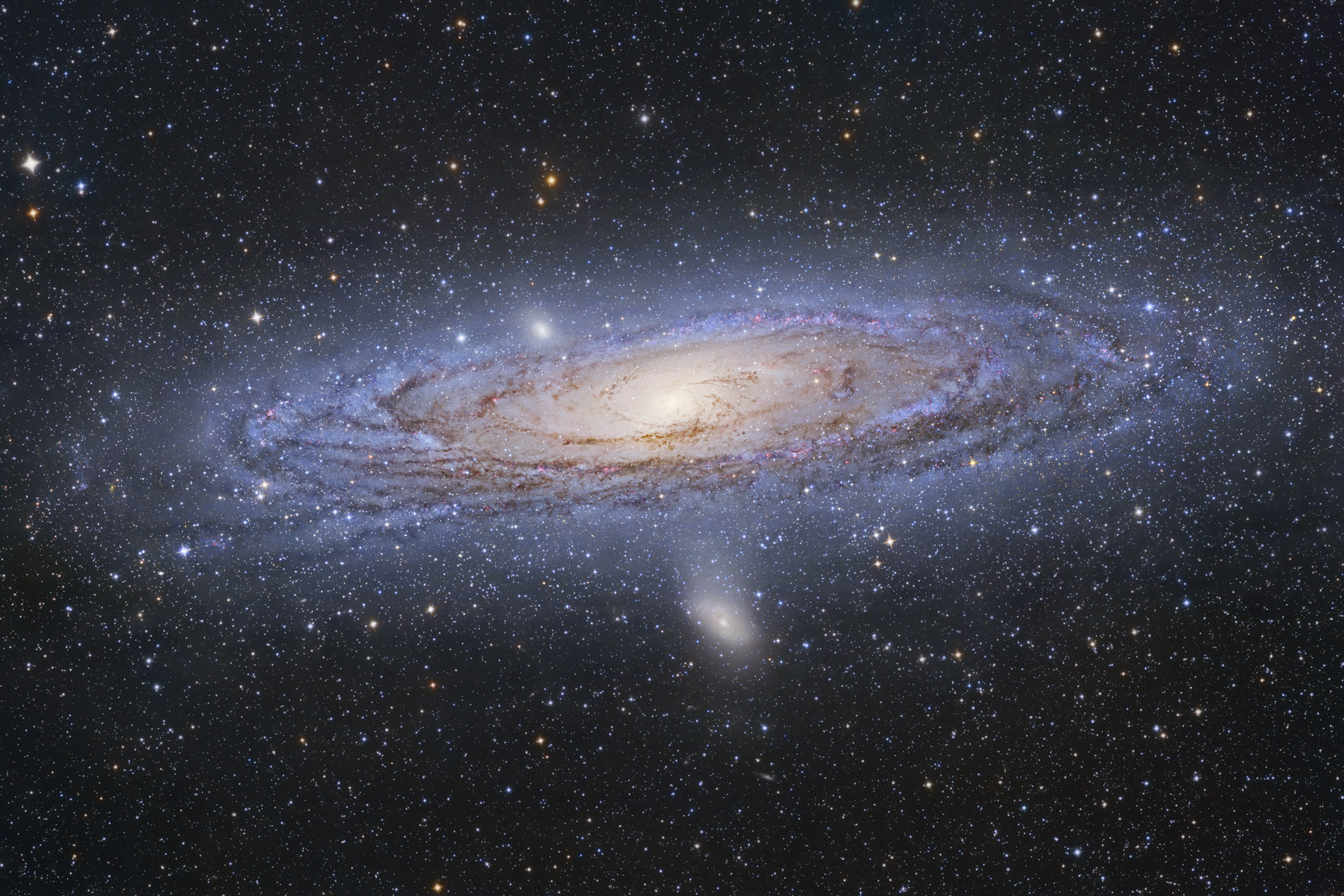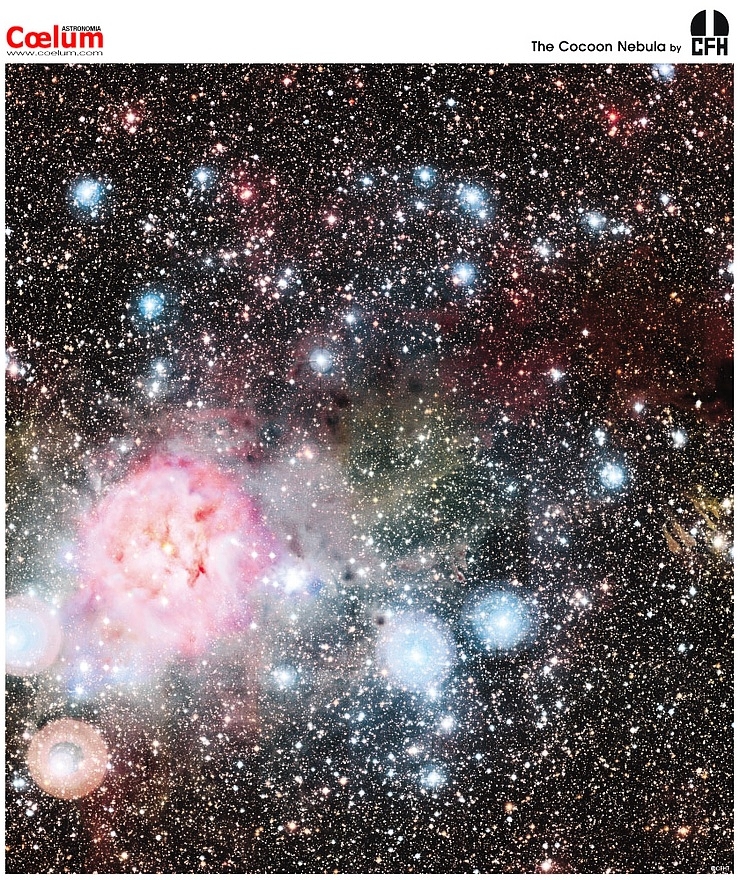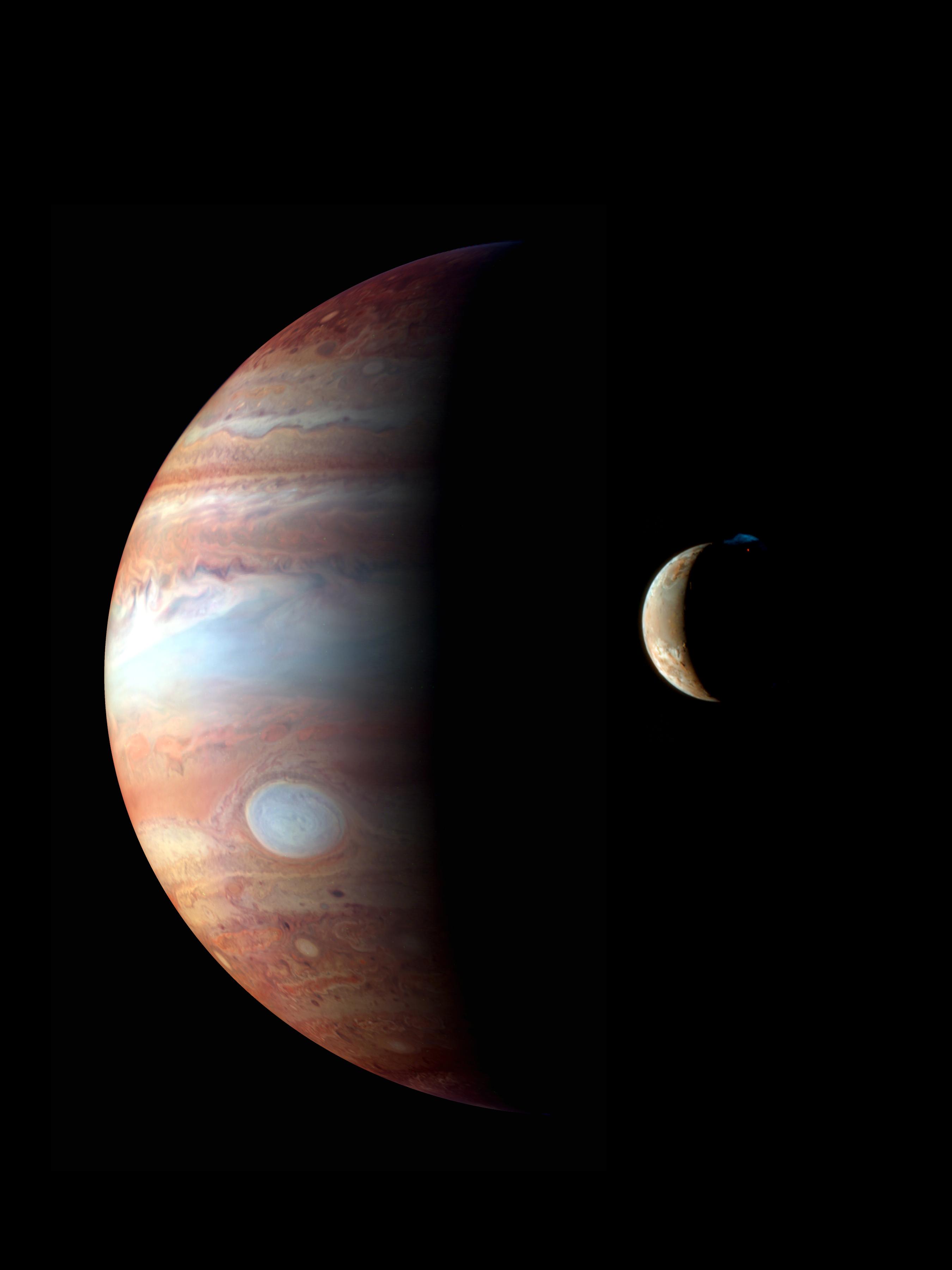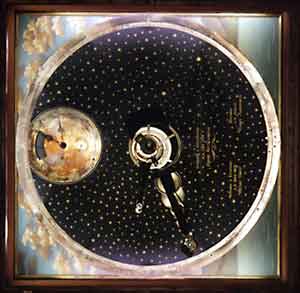 This is a stunning picture of the Andromeda Galaxy, or M31, which is nearly two and half million light-years away. It is over 200,000 light-years across. Its bright yellow nucleus and blue spiral arms are clearly visible. The Andromeda Galaxy was the galaxy that allowed for the development of the theory of island universes.
This is a stunning picture of the Andromeda Galaxy, or M31, which is nearly two and half million light-years away. It is over 200,000 light-years across. Its bright yellow nucleus and blue spiral arms are clearly visible. The Andromeda Galaxy was the galaxy that allowed for the development of the theory of island universes.
Friday, January 25, 2008
3.4 Andromeda Island Universe
 This is a stunning picture of the Andromeda Galaxy, or M31, which is nearly two and half million light-years away. It is over 200,000 light-years across. Its bright yellow nucleus and blue spiral arms are clearly visible. The Andromeda Galaxy was the galaxy that allowed for the development of the theory of island universes.
This is a stunning picture of the Andromeda Galaxy, or M31, which is nearly two and half million light-years away. It is over 200,000 light-years across. Its bright yellow nucleus and blue spiral arms are clearly visible. The Andromeda Galaxy was the galaxy that allowed for the development of the theory of island universes.
Friday, January 18, 2008
3.3 The Cocoon Nebula
 The Cocoon Nebula, or IC 5146, is a fantastic nebula 4,000 light-years away in Cygnus. Inside the nebula is a newly developing star cluster. At the same time, the nebula contains bright red emission, blue reflection nebulas, and dark absorption nebulas. The star to the left is believed to have created a hole in the molecular cloud. This same star provides much of the energy for the light emitted by the nebula.
The Cocoon Nebula, or IC 5146, is a fantastic nebula 4,000 light-years away in Cygnus. Inside the nebula is a newly developing star cluster. At the same time, the nebula contains bright red emission, blue reflection nebulas, and dark absorption nebulas. The star to the left is believed to have created a hole in the molecular cloud. This same star provides much of the energy for the light emitted by the nebula.
Friday, January 11, 2008
3.2 Observation Log
Time: 7:00-9:00
Location:270 15' 41.46" N, 820 24' 48.71" W; Field behind Suncoast Community church on Hawkins Road
Sky Conditions: Relatively clear. Clouds toward the end. Some light pollution.
Instruments: Binoculars, Telescope
Planets: Mars
Bright Stars Noted: Sirius, Rigel, Betelgeuse, Procyon, Pollux, Castor, Capella, Aldebaran, Polaris, Deneb, Achernar, Algol
Constellations Noted: Canis Major, Cepheus, Casseopeia, Auriga, Gemini, Canis Minor, Lepus, Monoceros, Eridanus, Andromeda, Pegasus, Perseus, Taurus, Orion
Binary Stars: Rigel, Capella
Deep Sky Objects: Hyades, Pleiades, M42, M31, M38, M36, M37
Other: Observed the Moon and the Trapezium of M42
3.1 Jupiter and Io from New Horizons

Taken by the New Horizons spacecraft, Jupiter and its moon Io appear in fantastic detail. Jupiter was captured in three bands of infrared light, causing the Great Red Spot to appear white. Jupiter's complex atmosphere is clearly visible with swirls, stormy ovals, and bands that span the entire planet. In this picture, Io's volcano Tvashtar is clearly active, emitting a sunlight-scattering plume. Below the plume lava is visible.
Thursday, January 10, 2008
2.11 Picture Related to Rittenhouse Biography
2.10 Biography: David Rittenhouse
Whitney Webb
Mr. Percival
Astronomy Honors
10 Oct. 2007
David Rittenhouse
As the leading astronomer of Revolutionary America, David Rittenhouse indelibly left his mark on the astronomy of
In 1766, Rittenhouse married Eleanor Coulston, who bore him two children soon after, but tragically died during childbirth only four years after their marriage. Rittenhouse moved to
During the Revolutionary War, Rittenhouse was a member of the Pennsylvania General Assembly and the Pennsylvania Constitutional Convention. He also served on the Board of War and was state treasurer from 1779 to 1787. In 1779, he was appointed to the Board of Trustees of the
Works Cited
"David Rittenhouse." Penn in the 18th Century.
Dodge, Russ. "David Rittenhouse." Find a Grave. 21 June 2001. 10 Jan. 2008 [http://www.findagrave.com/cgi-bin/fg.cgi?page=gr&GRid=22735].
Leitch, Alexander. "The Rittenhouse Orrery." A
O’Connor, J. J., and E. F. Robertson. "David Rittenhouse." 12 Aug. 2005. Dept. of Math and Statistics,
Rittenhouse, David. "To Determine the



